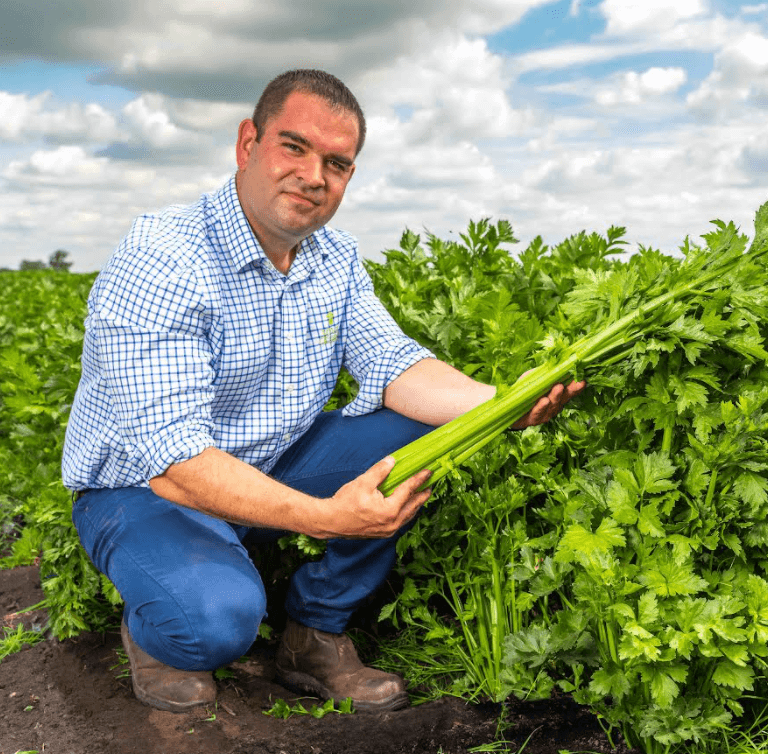QUESTIONS AND ANSWERS WITH OUR FENLAND CELERY GROWER: IVAYLO
Ivaylo Kostadinov is the grower behind Fenland celery, a heritage celery variety, grown in the Cambridgeshire Fens.
Traditionally a Victorian artisan crop grown from October to December for the Christmas market, Fenland celery was revived by fresh produce experts G’s Fresh in the late 2000’s. G’s Fresh has grown celery in the Isle of Ely in Cambridgeshire for over 50 years.
Fenland celery was given Protected Geographical Indication (PGI) status under the European Protected Food Names Scheme in 2013 making it the first English vegetable to be given PGI status. It now has UK Protected Geographic Indication from the Department for Environment, Food and Rural Affairs.div>
Traditionally a Victorian artisan crop grown from October to December for the Christmas market, Fenland celery was revived by fresh produce experts G’s Fresh in the late 2000’s. G’s Fresh has grown celery in the Isle of Ely in Cambridgeshire for over 50 years.
Fenland celery was given Protected Geographical Indication (PGI) status under the European Protected Food Names Scheme in 2013 making it the first English vegetable to be given PGI status. It now has UK Protected Geographic Indication from the Department for Environment, Food and Rural Affairs.div>

Q&A
How long have you been in farming, Ivaylo?
I came to the UK over 15 years ago as a student to harvest celery and I have worked my way up through the business. Today I am the celery crop manager for G's Growers. I manage a large team and I oversee the entire growing operation. I ensure orders are met and work with our innovations team on projects to optimise growing and to farm sustainably.
How long have you been growing Fenland celery?
I’ve looked after the Fenland celery since 2018. It’s a really special crop and a privilege to be taking care of it.
Is growing Fenland celery really that different to growing mainstream celery?
Very different. Being grown in the traditional manner, almost exclusively by hand, it is hugely labour-intensive. We grow only 10-15 hectares of Fenland celery each season and it takes a lot of time to look after. The crop is planted in June and harvested from October. Traditional celery, by contrast, is planted from March/April and harvested in June. Fenland celery is exposed to all kinds of weather and we have to manage the effects of that on the crop. Our main concern every season is frost. It The way we protect Fenland celery from the frost – by digging deep furrows into the soil and ‘earthing-up’ (piling earth around the stems) around the crop as it grows – that is a big part of what makes it so unique.
Why are the Fens so good for celery?
The growing conditions here on the Cambridgeshire Fens are quite different to anywhere else in the country. The region in which Fenland celery is farmed has a deep, rich and peaty soil. It is packed full of nutrients, thanks to the decomposed plants that accumulated over hundreds of years while the Fens were under water. The soil boasts around 15-20% organic matter, compared with as low as 3% for some soils. As well as protecting the crop, the earthing up the soil ‘blanches’ the stems, flushing out the chloroform and making for a milder flavour as well as a distinctive paler stem.
What time does your alarm go off on a typical morning?
My alarm is set for 5:45am six days a week. I’m often not home until 7pm so it is a long day but I love it.
How do you like to eat Fenland celery?
I like it braised or roasted to really bring out the flavour. For a quick and healthy snack I love ‘ants on a log’ – a stick of celery halved with peanut butter spread into the groove and topped with raisons. A new classic!